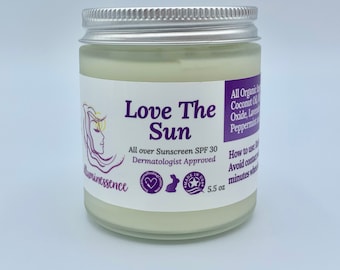We can't find the internet
Attempting to reconnect
Something went wrong!
Hang in there while we get back on track
When you buy through links on our site, we may earn an affiliate commission. Learn more
sunscreen
by Jason Denney
Chemical blockers
Most major brands use chemical blockers in order to provide higher SPFs and for better waterproofing. The issue is that some research on these chemicals have been linked to damage to not only humans but also coral reefs. Believe it or not, given the popularity of these hot tourist destinations a lot of sunblock washes off into the ocean, and not to mention the effect of waste water runoff. While these chemical concentrations are low this doesn’t mean they can’t or will not eventually have an active effect on delicate marine life. Granted, any effect on reefs will be dwarfed in comparison to the impact of climate change, so if reefs are a motivating factor for you, know that everyone avoiding chemicals in their sunblock isn’t going to save the reefs. Note that some brands have “reef-safe” on their label, however these indications are unregulated, so best to look at the ingredient list.
Chemicals to avoid:
- Oxybenzone
- Avobenzone
- Octisalate
- Octocrylene
- Homosalate
- Octinoxate
- 4-methylbenzylidene camphor
- PABA
- Triclosan
Mineral blockers
While sunscreens that use minerals like zinc oxide or titanium dioxide to reflect sunrays seem to be less likely to negatively impact marine life and humans, they have some disadvantages. They tend not to rub in as clearly and have lower rated SPFs. Thus, it helps to find ones that match your skin color; most come in different colored tints. Also, the mining of zinc and ilmenite to produce titanium dioxide aren’t without their local environmental impacts.
Nanoparticles
There’s concern whether nanoparticles are safe to use in sunblocks, and the limited research that exists has provided mixed results. If you want to be overly-cautious, you should avoid them. The problem is that the behavior of these nanoparticles really depends on their exact size and makeup and that’s something really difficult to regulate (and isn’t currently regulated). We do know not to inhale nanoparticles, so might want to at least avoid spray or powder based blockers.
Microplastics
Like all cosmetic products, there’s a risk of microplastics being used as an ingredient in sunblocks. The easiest way to avoid them is to avoid sunblocks with ingredients that you don’t understand and sound like something you heard about in chemistry class.
Major Brands
All major brands in the USA use plastic containers and contain concerning ingredients, here are some notes:
- Alba Botanica - avoids microplastics, uses palm oil, vegan friendly, tax avoidance
- Banana Boat - not attempting to reduce problematic chemicals, uses palm oil, tax avoidance
- Coppertone - not vegan
- Hawaiin Tropic - not attempting to reduce problematic chemicals, uses palm oil, tax avoidance
- JASON - avoids microplastics, uses palm oil, tax avoidance
- L’oreal - product contains octinoxate only, avoids other problematic chemicals, uses palm oil
Alternatives
As far as unconventional sunblocks, thanakha is the most promising. It’s a paste made from a particular bark that contains a chemical capable of absorbing UVA rays, however it doesn’t seem to block the entire UV spectrum and thus isn’t a proven method for preventing skin cancer. Other alternatives include different types of cooking oils like coconut, red raspberry seed, and sesame. While they might provide a little extra SPF, they don’t block nearly enough of the UV spectrum and, practically speaking, just make you a little tastier while you roast.
Resources:
-
https://www.sustainablejungle.com/zero-waste/zero-waste-sunscreen/
-
https://www.ewg.org/news-insights/news/do-chemicals-your-sunscreen-damage-fragile-coral-reefs
-
https://www.ewg.org/sunscreen/best-sunscreens/best-beach-sport-sunscreens/
-
https://www.ewg.org/sunscreen/report/the-trouble-with-sunscreen-chemicals/
-
https://www.ewg.org/sunscreen/report/nanoparticles-in-sunscreen/
-
https://www.nationalgeographic.org/encyclopedia/microplastics/
-
https://www.ethicalconsumer.org/health-beauty/shopping-guide/sunscreens
-
https://www.mmtimes.com/lifestyle/19412-than-lines-does-thanakha-work-as-sunscreen.html
Want more? Become an Intentful Consumer!
Get updates on new research and products. Upvote, comment, and add suggestions to help others.




